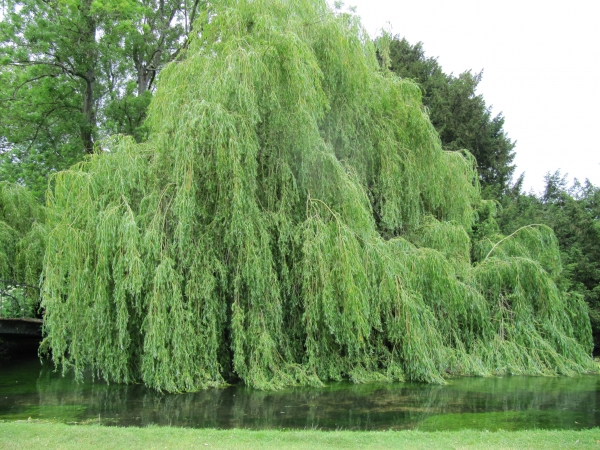It was when the question was put to me ‘what is your favourite tree’? Up to that time I hadn’t given it a lot of thought, a tree was a tree.

By Allan Crane*
‘What is your favourite tree?’ At the time the question was raised I was with a group of Landcare Volunteers, removing Lantana to allow the native fauna to recover and grow.
Looking up and around at the numerous trees, Spotted Gum, Stringy Bark, Iron Bark, Acacias, all playing a major role in the environment, but none of which I could call a favourite.
Later, I gave the question further thought. If there was one tree that had been recurring through my past life, it would have to be the Willow. Now you may well think that this is a strange choice. Let me explain why.
My association with Willows began when, as a young child, about six years old, I discovered the story ‘Wind in the Willows’ by Kenneth Grahame. I was fascinated by the adventures of Toad, or should I say misadventures. I had read the tale several times, seen a movie and enjoyed it each time.
My next experience with Willows was while living on the mid-north coast on a Dairy Farm, about five miles west of Kempsey. The house we were renting was situated on a hill. From the verandah you could look down the hill, across the paddocks to the Macleay River.
At the bottom of the hill there was a group of quite large of Willow Trees, growing quite close to each other, so close, in fact, they formed a large hedge. What was interesting about them was that the Willow’s foliage would normally trail down to the ground, hence Weeping Willows.
These particular trees didn’t, the lower foliage stopped growing about two-to-three metres from the ground, as though they had been trimmed by a large pair of shears, which would have been highly improbable.
I thought about it for some time, wondering what or who could have done it. It was then I realised that the culprits were the dairy cows. I watched them reach up and nibble away at the young growth, the cows all being of similar height, with heads raised for a quick nibble, the result was a very neat Willow tree.
When the Macleay River flooded the lower paddocks, the trees would be submerged with only the tops showing. They would be like that for days but, as the water slowly receded, they would then appear none the worse from the ordeal.
The house we purchased at Collaroy Plateau had a very large Willow at the bottom of the garden. It provided wonderful shade in Summer, sitting there relaxing or reading, a cold drink with just a faint perfume of the blossoms. A friendly family tree but it did have a nasty habit of sending its roots into my neighbour’s sewerage system and blocking the pipes.
During one such episode the Plumber, who had been called to clear the pipe, dropped his Dentures down into the Sewerage Line. It took him quite a few minutes to locate and retrieve them.
Some Trees have a malignant gene in them.
I guess we all have our fantasy and I must admit that I have one or two, well, maybe a few.
One of which is whenever I hear the words ‘Willow Tree’ mentioned.
I see myself laying back in a punt, a cold glass of white wine in my hand, drifting down a slow-running river, a warm summer’s day.
Along the river banks I see Willow Trees clustered together, their leaves trailing in the water, the gentle hum of insects, distant birds calling out, the peace, solitude and calmness of my thoughts, all very English.
Well, I did say it was a fantasy.
* Allan Crane is a bushcare volunteer for the Wadalba Wildlife Corridor. This story is part of a series being published by The Point in association with Tea for Trees to raise awareness of the clearing of Ourimbah State Forest by Forestry NSW and the need to protect our trees.


